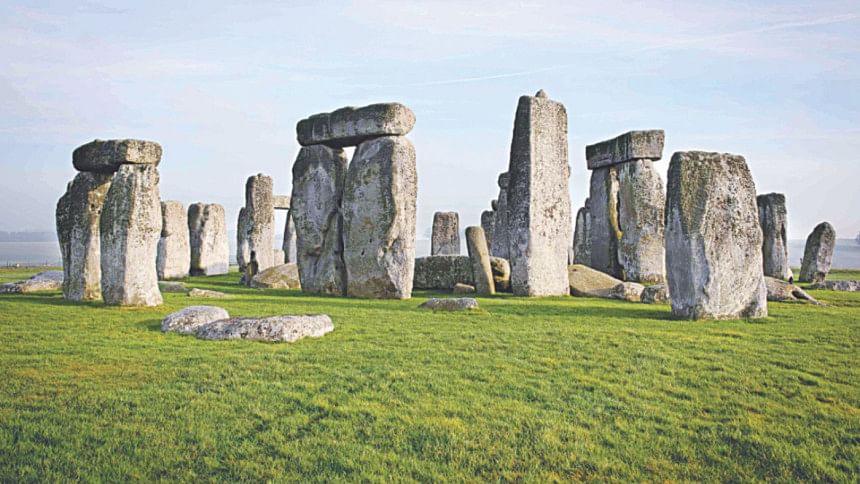Stonehenge mystery solved, says study

Despite a century of scientific scrutiny, the 5000-year old Neolithic monument in southern England known as Stonehenge has yielded few secrets about the people buried amidst its ring of towering rocks.
Most of their remains were cremated, leaving only ashes, a few bone fragments, and an archaeological dead-end.
But a eureka moment discovery by Christophe Snoeck, a University of Oxford graduate student at the time, revealed that many probably came from as far afield as Wales in western Britain, source of the bluestone used to carve Stonehenge's mysterious and entrancing monuments.
Some of these pre-historic wayfarers -- who may have helped transport the massive stones -- were cremated before their ashes were laid to rest, Snoeck and colleagues reported in a study published Thursday in Scientific Reports.
Others may have died on the job, or settled near Stonehenge to finish their days.
What Snoeck discovered in the lab is that strontium, a heavy element found in bone, resists the high temperatures of a funeral pyre, which can top 1000 degrees Celsius (1832 degrees Fahrenheit).
Indeed, extreme heat seals the element's unique signature, isolating it -- even over thousands of years -- from contamination by surrounding soil.
For scientists trying to tease out data from human remains burnt to a crisp, this opened up a gold mine.
Cremation destroys all organic matter, including DNA.
"But all the inorganic matter survives, and there is a huge amount of information contained in the inorganic fraction of human remains," Snoeck explained.
By measuring traces of strontium, he told AFP, "it is possible to evaluate the origin of the food we eat, especially the plants."
Plants absorb strontium from the soil, and that strontium is then incorporated into our bones, reflecting the place where the plants grew.
The researchers examined skull bone fragments from 25 people buried during an early phase of Stonehenge's history, around 3000 BC.
Ten of them, they determined, had spent at least the last 10 years of their lives in a different region.
The scientists were also able to tell whether the wood used in funeral pyres was from the Wessex area around Stonehenge, or from trees typical of the forests in Wales.
This enabled them to conclude that some of the people buried at the site had probably been cremated in western Britain before their ashes were transported.

 For all latest news, follow The Daily Star's Google News channel.
For all latest news, follow The Daily Star's Google News channel. 



Comments